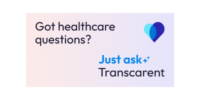JPHMP Direct July 25, 2024
Safety-net health clinics can use a variety of staff roles, processes, and resources to support patients to manage their blood pressure at home.
High blood pressure, which affects about 45% of US adults, can increase the risk of heart disease and stroke. In Ohio, adults with low-incomes and those from Black/African American or rural, Appalachian communities experience the largest disparities in heart disease and stroke risk. They also face more barriers to receiving medical treatment and managing their blood pressure compared to other populations. Safety-net health clinics, such as Federally Qualified Health Centers (FQHCs), focus on providing care to these communities and are well-situated to help reduce related health disparities.
Self-Measured Blood Pressure Monitoring (SMBP) is when a person regularly...







